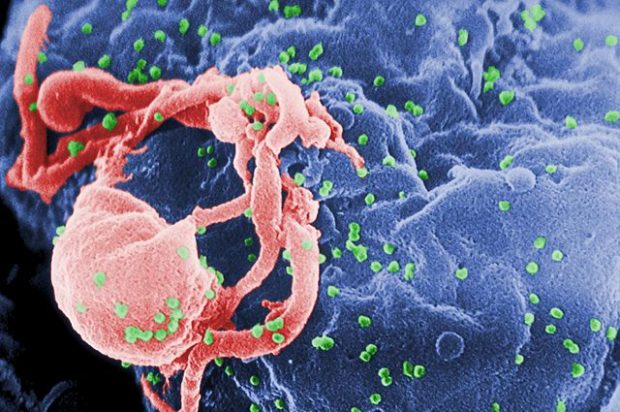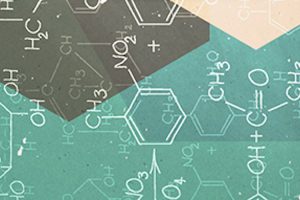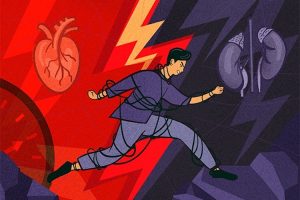Quitting visual search
Radiologist Jeremy M. Wolfe on search strategies in our everyday life, amnesiac search, and false alarms at me...
What is drug metabolism? If you take a drug, you expect the drugs to have an effect on you. One of the things you’ll probably notice though is if you have to take the drug often, more than once, maybe on a daily basis. Why doesn’t the effect of the drug after a single dose last forever? That’s because your body has a variety of ways of eliminating it. One of those ways is through metabolism. Pharmacology is what the drug does to you and drug metabolism is what you do to the drug in order to inactivate it and eliminate it.
As a field drug metabolism probably goes back to the middle of the last century and was finally systemized as an area of study by a scientist called Artie Williams, who actually worked at the Imperial College or St. Mary’s as it was at the time. He was the first man who bought all of the data that existed on how organisms deal with drugs or as we now call them xenobiotics, which is anything that isn’t really a food, that’s artificial. So, that can be an industrial chemical as well as a drug. We use the term “drug metabolism” as the shorthand for xenobiotic metabolism – it is shorter and easier to say. It’s really the science of understanding the relationship between drug administration and its effects.
I want you to imagine that you have a headache and you just taken an aspirin or a paracetamol. The tablet that you’ve taken is in fact a very complex piece of technology, because you swallow it, it goes into your stomach and because it’s designed to relieve pain quickly, it will dissolve very quickly. After a few minutes drug will begin to appear in your blood, not yet at levels where it will cure the headache, but it’s beginning to get there. As the tablet dissolves in the stomach, it starts to move into your body. The concentrations of it in your blood will begin to rise and at a certain point they get to have an effect and that headache will begin to go away, but the drug is still dissolved and is still being absorbed. So, the concentration will carry on going up until all the drug has been absorbed, and then it will begin to decline. Eventually again it will drop the loads of concentration in the blood where it has an effect and it’s time to take another tablet. That’s why if you take drugs like aspirin or paracetamol, ibuprofen, you will see that it says take one or two tablets every four hours. This isn’t something that’s been made up there’s a lot of careful science behind that.
What you then have is what we call a pharmacokinetic profile – pharmacology and the kinetics of its elimination, pharmacokinetics or PK. If I say PK for now on what I really mean is that the blood concentration data is driving what’s going on. What pharmacologists do is they try and establish a relationship between effect – pharmacodynamics, and pharmacokinetics. They can predict with this concentration in the blood in any individual who’s taking it, how it will cure the headache or whatever.
What happens in these decline phases? Where is the drug going? What’s happening to it? Some drugs – and I wish I could think of one at the moment – are actually excreted largely unchanged. They come in, and what the body does is they filter them out through the kidneys or the liver, and they come out in the urine unchanged. For other drugs it’s more difficult for the body to do that, so the body will try and modify those drugs in such a way that it can excrete them and eliminate them. This is done by enzymes generally in the liver.
I want you to imagine that that this is a drug molecule in the circulation, they go into the liver and they falls into the active site of an enzyme called cytochrome P450. Cytochrome p450 modifies it and sticks on a hydroxyl or an OH-group. Now it’s a molecule with an OH-group on it. So, two things have happened here. Firstly, probably the drug has been inactivated to some extent. It’s been chemically modified, so it does not works so well. Secondly, it’s been made more water-soluble and that makes it easier to excrete. We’ve also put a handle on it, and if this molecule bounces around for long enough in the liver, it will come across other enzymes, who say: “Okay, there’s a handle”, and they will put another molecule on it (something like glucuronic acid, which is a glucose derivative or sulfate). We now have a molecule that is not only modified, but as a large group on it that completely inactivates it and makes it easy to excrete. So these molecules then disappear from the body. The decline phase that we see is a mixture of excretion unchanged and metabolism.
If we take a drug like ibuprofen, a couple of things can happen. You can get both these hydroxylations and glucuronidations to the drug and you get a mixture metabolites excrete. This is what defines why you take the drug every several hours – because your body is actively eliminating it. In the case of drugs like paracetamol, it already has a phenyl group on it. So, the first thing that happens is glucionidation, anything that isn’t glucionidated is sulfated and that’s fine at normal therapeutic doses. When you begin to exceed the therapeutic dose, what then happens is that other enzymes begin to work, because there’s so much of the drug floating around in the liver. Some of this paracetamol may fall into a cytochrome P450 again. This is a different cytochrome p450. There’s a large family of cytochromes, all of which or many of which have the ability to do drug metabolism.
So, the one that paracetamol is metabolized by is called CYP2E1. This does something that you really don’t want, because it forms a reactive metabolite, which then can go out and react with proteins and other things. Unless this metabolite is deactivated by cellular glutathione, it can cause damage. In extreme overdose that metabolic step is also overwhelmed, so you do get self-damage.
That’s quite important. The idea is that metabolism should make things inactive and safe, but frankly you know we’re not talking about intelligence here, this is just chemistry, that’s going on in cells. Sometimes cells do things that you don’t really want them to. That’s one of the reasons why you should always read what it says on the tin and follow the dosing schedule exactly. One of the things that is really nice, if you’re a patient is if you only have to take the tablet once a day. That’s great, but if the metabolism is too fast, then you may have to take the drug four times a day, which is inconvenient, people often forget.
If we know where the sites of metabolism are on a molecule, we can modify the molecule and we can try and block those sites in metabolism. Then we can increase the half-life. Instead of that profile you get this profile. Of course, there’s always a danger doing that, that we will get that profile and the drug never goes away. That’s a bad thing too. What you want is 24-hour intervals for dosing.

We can use this knowledge to modify our structures. I mean, drug discovery is not static, we don’t just discover one molecule to treat a disease, we try and find better ones. We can use our knowledge to design better molecules and better molecules are often safer and more efficacious. If you can design a molecule, where this biological half-life in the body is optimized, you can perhaps use lower doses.
One of the things that we’re trying to do when we try and optimize the pharmacological properties of drugs through optimizing their metabolism is make things right for human beings. That’s quite difficult because you can’t just take any old new molecule that you have no information on, and stick it into a human being. It’s not only unethical, it’s dangerous.
So we need to be able to screen through large libraries of molecules rapidly and reasonably predictively, and get good quality metabolic information. We do that now by using a whole range of in vitro technologies, cell based technologies. Then we can very quickly rank a series of molecules for the metabolic stability in a test tube, so that we can show that there’s a correlation between what we see in vitro with in vivo, and move more confidently towards dosing human beings in the hope that we have a drug that will better fit the properties that we require.
What are the challenges for us? One of the things we’ve learned over the last 50 years is that drugs are metabolized by range of these cytochrome p450s. The main one is CYP3A4 in humans and that does about 45% of all drug metabolism. But there are other more minor cytochromes. One in particular is CYP2D6, which is very variable in the human population – some people have it and some people don’t. If your drug is metabolized largely by CYP2D6, that can be a problem, because it means that two apparently similar individuals will get very different drug concentrations in their blood. One will metabolize it fast and the other will metabolize it slow. So, one of the things that we’re trying to do is to, firstly, engineer out of new drug molecules that’s any dependency on CYP2D6. Where you can’t do that, to make sure that we screen patients first, so that we can adjust the dose. One of the things that we’re trying to do in modern drug discovery is to screen out unhelpful properties like metabolism by these variable CYPs, so that the drugs are metabolized in ways that we can predict properly and understand, that will fit more to whole populations. It’s sort of personalized medicine, but trying to take away the problems that you get, if you’re not the right person.

Radiologist Jeremy M. Wolfe on search strategies in our everyday life, amnesiac search, and false alarms at me...

Researchers finally established the stable allotrope of the fifth element under normal conditions

Medical Scientist Brian Hoffman on the discovery of adrenaline, the “fight or flight response”, and the use of...